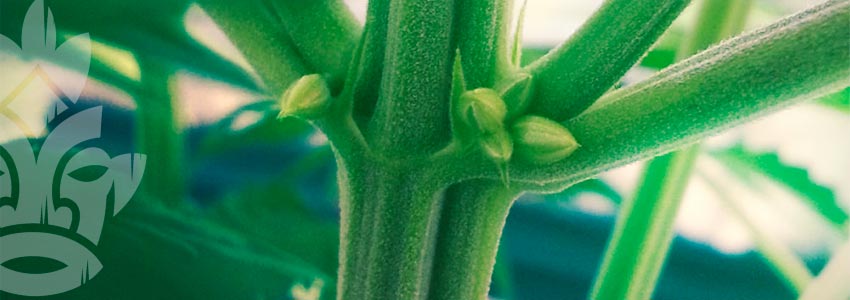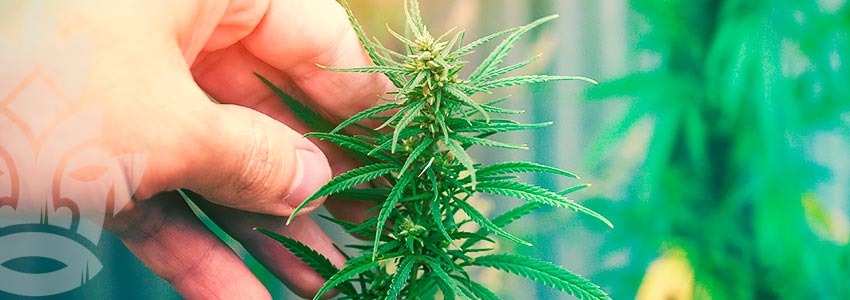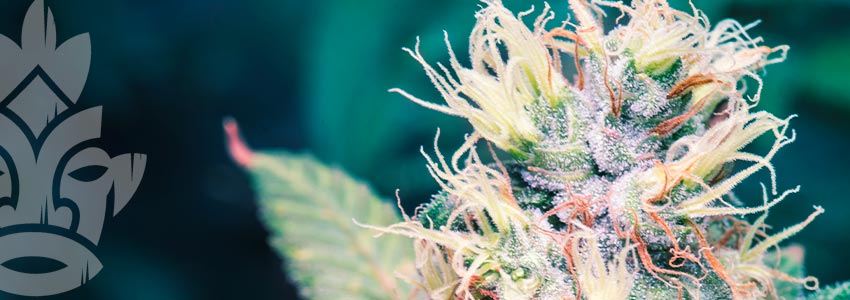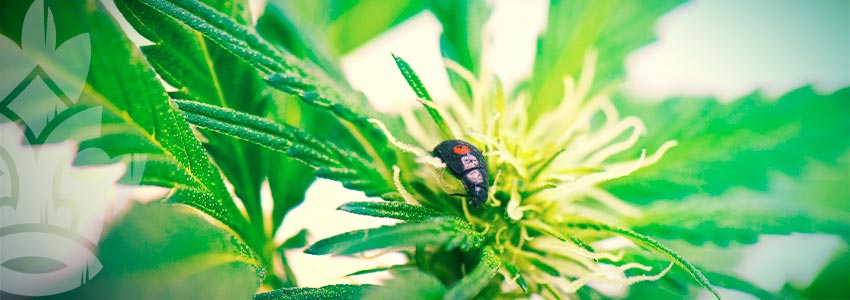Don't have an account?
Register NowYou have to add to cart at least 5 bottles or any program to make checkout.
- BlogCreate Superior Weed With A Male Cannabis Plant
Create Superior Weed With A Male Cannabis Plant
Published: May 3rd, 2019
Categories:
Cannabis Cultivation
A quick search online reveals a lifetime’s worth of articles about how to preserve female cannabis plants and tips for spotting and removing males before they have a chance to pollinate your crop. While none of these blogs are factually incorrect, what they fail to point out is the vast potential a male plant represents.
Let's begin with some evolutionary background regarding the cannabis species. Cannabis is part of the broader Cannabaceae family, and a common genetic trait that many of the varieties carry is the ability to produce separate male and female plants. In the majority of cases, traditional flowering plants are hermaphroditic. They will develop both male and female reproductive organs so that they can self-pollinate, ensuring the plant's life cycle continues.
Although this may sound like the ultimate solution, the dioecious nature of cannabis gives it a few distinct advantages that we will cover off shortly. In the meantime, let’s find out what we can do with a male cannabis plant outside of just destroying it.
DESPITE ITS BAD REPUTATION, MALE CANNABIS PLANTS HAVE A LOT OF USES

• Get juicing
Cannabis plants are packed full of nutrients, and while the research is still in the preliminary stages, many of the raw cannabinoids have displayed some potentially beneficial properties. Avoid blending the stalks and the larger leaves to make the taste more palatable, but otherwise, the rest of the male plant is fair game.
• Harvest their fibre
Male cannabis plants are typically kept because the fibres in their stems are preferred for making clothing and textiles—the male hemp fibres are softer and thinner, so easier to weave into intricate designs or styles. The art of harvesting male plants to produce textiles is an article in itself; however, at least you know that the option exists.
• Produce your cannabis concentrates
While the resin production of a male will never match that of a female cannabis plant, there is still enough to try to produce hashish. If you utilise all parts of the plant, there may well be enough resin to create one or two tightly packed blocks. Male plants also present an excellent opportunity to go back to where it all started and try to master the ancient art of hand-rolled hash or charas.
• The ideal outdoor growing companion
Due to the rich collection of terpenes present in the male cannabis plant, a few carefully positioned plants can be used to benefit the rest of an outdoor vegetable patch. Limonene and pinene have both proven effective at deterring harmful pests.
The only watch-out is where you decide to plant the male cannabis plants. If you are still planning to harvest a feminized crop, then you will need to place the male plants downwind, with your regular vegetables planted between the male and female cannabis variants. This should help prevent the female plants from becoming accidentally pollinated, and you will have some tasty vegetables as a reward.
• If all else fails, you could still smoke him
In the same way that the male cannabis plant can be used to produce hash, you can still harvest and smoke the dried flower. Numerous studies have been performed that show THC is still present in the male plant, just not at the same concentration as female variants. You can keep the male and smoke him as well—some weed is better than no weed.
TAKE YOUR GROWING TO THE NEXT LEVEL WITH THE MALE CANNABIS PLANT

Using male plants to feminize female plants ensures a level of genetic diversity that isn't present in hermaphroditic plant species. Any seeds produced by successful pollination with have a 50/50 split of DNA between both male and female contributors. This all sounds great, but you are probably wondering, why is genetic diversity essential for green-fingered growers?
In a few short words—better quality weed.
In the typical growing scenario, breeders will find a feminized strain with desirable attributes and clone her to produce an endless supply of harvestable plants. This is all well and good, but no one strain is perfect. That’s where the male cannabis plant steps in. By carefully selecting a suitable male, it is possible to improve the yields, resin production, and most importantly, the effect of female plants. With the right techniques, your perfect strain can break new ground, as long as we give a suitable male cannabis plant the chance to prove its worth.
USING THE MALE CANNABIS PLANT TO ESTABLISH A STRONG HERITAGE

You may have noticed a keyword in the previous paragraph—suitable. You cannot use any old male cannabis plant and expect better weed once it has been bred with your female. The male plant has to have a few characteristics that we need to successfully identify before it can have the honour of improving your crop.
The first attribute to look out for is how quickly the male plant flowers. If it flowers by itself (autoflowering) or flowers too rapidly, then breeding with this specimen could potentially lead to hermaphrodite offspring. Once you have identified a plant that flowers correctly, we need to take a closer look at the flowers themselves. Discard any plants that have loose or airy flowers. Instead, keep those that have a dense structure and appear tightly packed.
Secondly, we need to observe how the plant grows. Again, if growth is too fast or too tall, then it should be avoided. Also, pay close attention to the stems. They should be large and hollow to provide the best offspring and potentially improve THC production (according to anecdotal evidence from growers).
If you are ever unsure, choose the plant that strikes an even middleground. Not too tall, not too short, tight flower production, and a solid stem structure. If it doesn't meet these requirements, then it should be discarded. Our aim is to improve the quality of your already proven clone, not muddy the waters with inferior genetics. Male plants are incredibly useful, but nobody said they were all perfect.
NEXT TIME, THINK TWICE BEFORE DISCARDING THE MALE CANNABIS PLANT

By taking the DNA from both a male and female plant when producing offspring, cannabis has inevitably ensured its future survival. The mechanism is vital to prevent a single pathogen from wiping out the entire cannabis species; instead, the plant continues to adapt and thrive in its surroundings. This also means that expert breeders can combine the desirable attributes from both a male and female plant to make a strain more resistant to pests, or better at combating diseases.
If we were to write off the male plant completely, we would be doing the cannabis species an enormous disservice, and potentially forcing some strains into extinction. We should, of course, remove the male plant when there is a risk of a female crop being fertilised, but as we’ve shown, there are several options for putting the male plant to good use.
If you want an endless supply of cannabis, clones are one option. The other is to hand-select some suitable male plants and create a strain that is bigger, better, and danker than you could have imagined.





